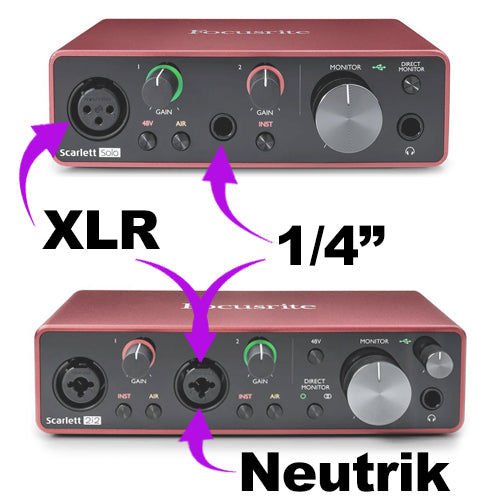Cables & Ports
1) TS vs TRS vs TRRS
A TS (Tip-Sleeve) cable is the simplest type of audio cable. It has a single conductor that carries an unbalanced signal. TS cables are commonly used for instruments such as...
1) TS vs TRS vs TRRS
A TS (Tip-Sleeve) cable is the simplest type of audio cable. It has a single conductor that carries an unbalanced signal. TS cables are commonly used for instruments such as...
2) CV/Gate
In the world of electronic music production and modular synthesizers, CV/Gate cables and ports are crucial components that enable seamless communication between devices, unlocking a wealth of creative possibilities. These...
2) CV/Gate
In the world of electronic music production and modular synthesizers, CV/Gate cables and ports are crucial components that enable seamless communication between devices, unlocking a wealth of creative possibilities. These...

3) XLR and Neutrik
In the realm of professional audio, XLR and Neutrik cables and ports play a pivotal role in delivering exceptional sound quality. These cables facilitate balanced audio signals, providing a pristine,...
3) XLR and Neutrik
In the realm of professional audio, XLR and Neutrik cables and ports play a pivotal role in delivering exceptional sound quality. These cables facilitate balanced audio signals, providing a pristine,...
4) Composite Cables (RCA)
Composite cables offer a cost-effective and user-friendly solution for connecting various audio and video devices in music production and DJ performances. Although they may not be ideal for high-end music...
4) Composite Cables (RCA)
Composite cables offer a cost-effective and user-friendly solution for connecting various audio and video devices in music production and DJ performances. Although they may not be ideal for high-end music...
5) DC Power: Polarity, Voltage, and Amps
In the world of music equipment, understanding Direct Current (DC) power is crucial for maintaining a reliable and efficient setup. DC power is a consistent, unidirectional electrical current that ensures...
5) DC Power: Polarity, Voltage, and Amps
In the world of music equipment, understanding Direct Current (DC) power is crucial for maintaining a reliable and efficient setup. DC power is a consistent, unidirectional electrical current that ensures...
6) Speaker Wire
In the pursuit of optimal audio quality and system performance in a home studio, selecting the right speaker wire is crucial. This involves considering factors such as speaker wire gauge,...
6) Speaker Wire
In the pursuit of optimal audio quality and system performance in a home studio, selecting the right speaker wire is crucial. This involves considering factors such as speaker wire gauge,...